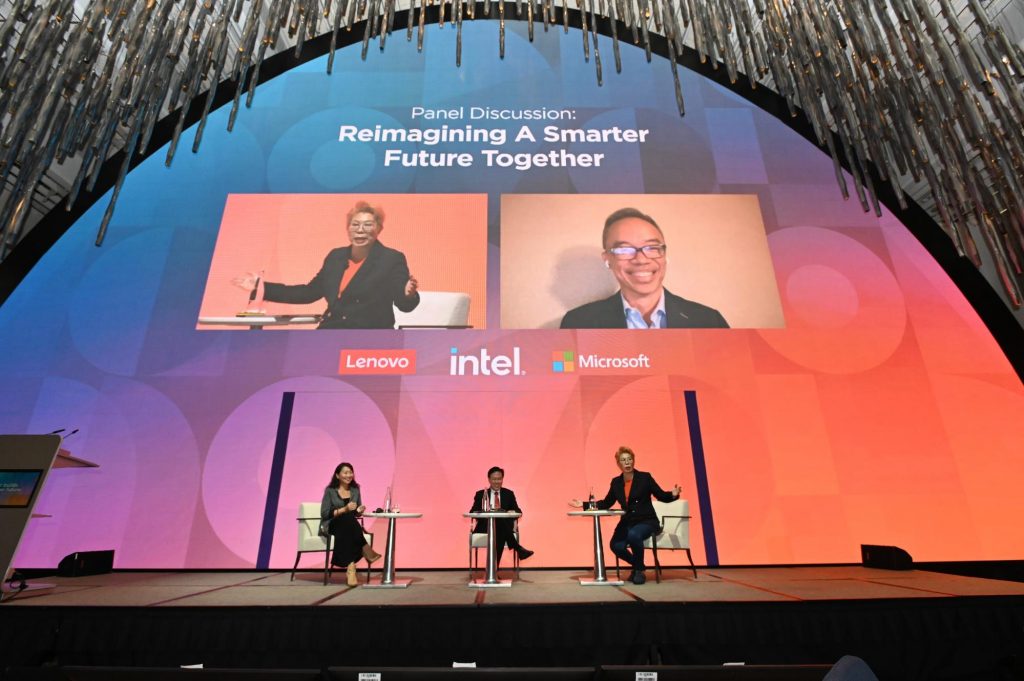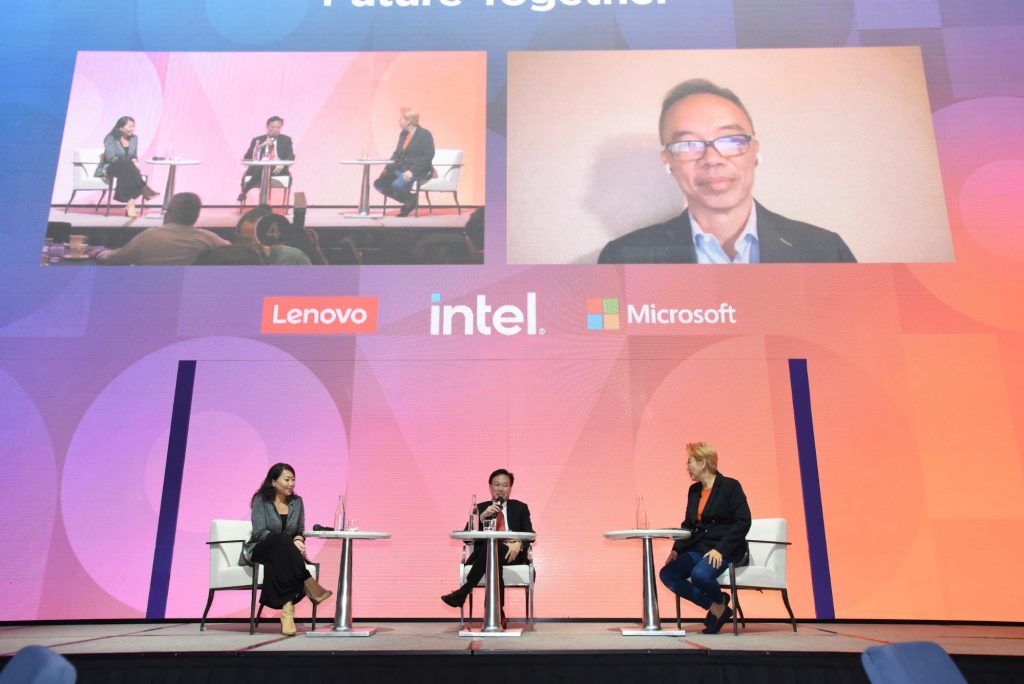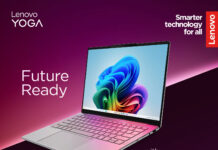
Coming back after two years, Lenovo had its first in-person showcase – Lenovo Experiential Day at JW Marriott Hotel South Beach. The themes surrounding Lenovo Experiential Day highlighted how organisations can adapt and adopt digital transformation 2.0 with smarter, integrated and personalised experiences. The showcase underlines the company’s mission to deliver smarter technology to all and comes at a crucial time as organisations face multiple headwinds.

With hybrid work becoming a permanent configuration, the one-day event opened the doors for customers, partners, and the media to meet and speak with Lenovo’s experts who were on hand to share Lenovo’s vision for end-to-end, service-led solutions featuring Lenovo’s extensive suite of devices, services and solutions through six immersive experience zones. The event provided its audience with a peek into the smart workplace of the future to demonstrate how CIOs can re-examine their IT infrastructure while keeping in mind aspects such as employee experience and Environmental, Social, and Governance (ESG).
Lenovo Experiential Day 2022 also featured a robust conversation on “Reimagining A Smarter Future Together”. Moderated by award-winning actress and serial entrepreneur Irene Ang, the panel featured Nigel Lee, General Manager, Intelligent Devices Group, Lenovo Singapore, Clara Chen, Founding Managing Partner of Singapore Deep-Tech Alliance (SDTA), and Dr Dennis Khoo, Managing Partner at allDigitalfuture, Bain External Advisor Singapore and author of Driving Digital Transformation.

How do these technologies fit in the workplace of the future
To consolidate Lenovo’s narrative of a smarter future, Lenovo developed an underlying workplace narrative featuring local actors from FLY Entertainment – Amy J Cheng, Andrew Marko, and Alan Wan. Titled “Smarter Work at Play”, the actors brought to life the possibility of a brighter and smarter workplace with breakthrough technologies, aligning purpose with user-centricity to drive more positive experiences in everyday life.
These experiences, divided into six zones, included:
Zone 1: Lenovo Building & Workplace Solutions
Showcased to the Singapore audience for the first time, this zone featured the launch of Lenovo’s new suite of building and workplace solutions to address a core challenge in the workplace today – the increasingly complex needs of a hybrid workforce. Lenovo’s Workplace Solutions zone showed how solutions like simplified workspace booking, utilisation analytics, and smart facilities management coupled with professional services can help businesses provide employees with enhanced flexible working options, offering the benefits of both in-office interactions and remote work. The Lenovo Workplace Solutions portfolio helps businesses and CIOs adapt to the hybrid work era with several smart workspace solutions, including:
- Workspace Booking: Scheduling software offering real-time visibility on workspace occupancy enables employers to manage capacity better, helps employees book facilities quickly to save time, and improves contact tracing with automated post-event reporting.
- Workplace Analytics: Delivered via a dashboard providing real-time insights on space usage, based on non-invasive data from heat and motion sensors.
- Digital Signage: Content management system that turns traditionally static displays and signages at high-traffic locales and touchpoints into visually-rich multimedia screens that is dynamically updated to convey important updates in a timely manner.
- Smart Locker: Flexible self-service storage service enabling employees to store, pick up and drop off assets securely 24×7 with minimal fuss and reduced waiting time.
- Smart Collaboration: All-in-one meeting room solution with video conferencing software and integrated devices that are easy to use and scale according to meeting sizes, protected by ThinkShield, a suite of security solutions to safeguard users’ privacy and data.
Zone 2: Lenovo Smarter Learning
Highlighted in this zone was Lenovo Aware – a software that provides users with healthcare solutions to help them make better use of their PCs, and also provides an “Attention Function” to help users stay focused and motivated while improving their hybrid working and learning experience. Whether it is working parents managing their children learning remotely or professionals working on the go, Lenovo Aware addresses the challenge of excessive screen time, ensuing body posture and vision issues by using the PC’s built-in camera to detect a person’s body language and eye contact with the device. Activated within Lenovo Vantage, it is a manual opt-in service that reminds users to sit back from the screen, straighten their posture, or simply take a break from their PC to rest their eyes.
Zone 3: Smart Distance Learning
There is little doubt that COVID-19 has made the past few years age of distance learning. Not just applicable to teachers who need to prepare remote learning materials, but professionals who may need to prepare for training, workshops, and seminars virtually. This zone demonstrated how devices, software and services are being integrated to make it easy for attendees and presenters and showed that setting up an engaging session virtually need not be a hassle.
Zone 4: Lenovo ThinkReality
In 2020, COVID-19 became a catalyst for extended reality (XR) technologies (both AR and VR) to help enterprises maintain business continuity and enable people to collaborate and work remotely more efficiently. This zone provided attendees with a view of Lenovo’s ThinkReality A3 Smart Glasses. Conceived for today’s world, this augmented reality (AR) smart glasses, powered by Lenovo’s flexible enterprise XR software platform, have a vital role to play across industries. In manufacturing, for instance, Lenovo ThinkReality powered by holo|one software is giving Micron’s engineers the ability to keep production facilities running while helping the company meet the growing demand for its products.
ThinkReality also lets business teams connect existing XR devices and add advanced new devices as they become available. The platform allows customers to develop and deploy apps and content remotely throughout the enterprise while managing devices and applications from a single interface.
Zone 5: Lenovo TGX Remote Workstation Software / Lenovo Self-Checkout Kiosk
This zone demonstrated the flexibility and ease by which organisations can deploy high-performance computing to their remote teams no matter where they are, allowing anyone in an organisation to access their powerful workstations anytime, anywhere, securely. For example, with Lenovo’s ThinkStation P520 and ThinkPad P1, organisations can harness the power of NVIDIA Quadro and TGX Remote Workstation software to decode and encode large databases and process graphically intense applications to bring greater responsiveness and performance to users for the best experience.
This zone also featured Lenovo’s Self-Checkout kiosks, retail solutions that seamlessly integrate offline and online channels to connect an organisation’s front and back office for optimal efficiency.
Zone 6: Lenovo Future of Work
This zone featured Lenovo’s Device-as-a-Service (DaaS) to help businesses arrive at more sustainable IT solutions, reflecting Lenovo’s goal of cutting the brand’s emissions in half by 2030. DaaS reduces the total cost of ownership for employee technology by carefully assessing an organisation’s transformation initiatives and providing the right devices to the right users. It also offers organisations greater flexibility by giving them the option to incorporate hardware from other technology vendors to meet specific business needs. Ultimately, the lease-like model ensures organisations are keeping abreast with technology updates to provide the best experience to the workforce while minimising impact to the environment.
The showcase demonstrated how Lenovo Asset Recovery Services (ARS) and CO2 Offset Services mitigate security and environmental risks associated with new device procurement and end-of-life asset disposal. These services ensure organisations are procuring, managing, and disposing of their technology hardware in a responsible and sustainable manner while making sure that the entire process is legally compliant, secure, and consistently applied globally.








